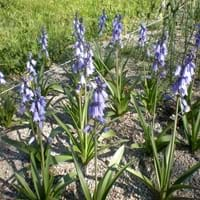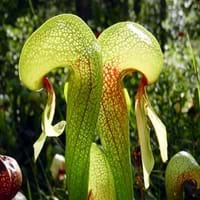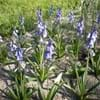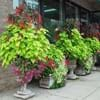Life Span
Perennial
Annual
Type
Bulb or Corm or Tuber
Bulb or Corm or Tuber
Origin
Southern Europe, Western Europe, Northern Africa
Eastern Asia
Types
Hyacinthoides flahaultiana, Hyacinthoides mauritanica, Hyacinthoides reverchonii
Not Available
Habitat
Parks, wastelands, Waysides, Woodland edges
Boggy areas
USDA Hardiness Zone
4-10
6-9
Habit
Clump-Forming
Upright/Erect
Flower Color
White, Blue, Pink, Blue Violet
White, Green, Purple
Flower Color Modifier
Bicolor
Bicolor
Fruit Color
Not Available
Green, Orange
Leaf Color in Spring
Green
Green, Purple
Leaf Color in Summer
Light Green
Light Green
Leaf Color in Fall
Several shades of Green
Several shades of Green
Leaf Color in Winter
Light Green
Light Green
Leaf Shape
Narrow
Tubular
Plant Season
Spring
Spring, Summer, Fall
Sunlight
Partial Sun, Partial shade
Partial Sun, Partial shade, Full Shade
Growth Rate
Medium
Medium
The pH of Soil
Acidic, Neutral
Acidic, Neutral
Soil Drainage
Well drained
Well drained
Bloom Time
Spring, Late Spring
Spring
Tolerances
Drought
Drought
Where to Plant?
Ground
Container, Ground
How to Plant?
By dividing rhizomes, tubers, From bulbs, Seedlings
Seedlings, Transplanting
Plant Maintenance
Medium
Medium
Watering Requirements
Average Water Needs, Do Not over Water, Requires regular watering
Distilled Water, Mineral Water
In Summer
Lots of watering
Lots of watering
In Spring
Moderate
Moderate
In Winter
Average Water
Average Water
Soil pH
Acidic, Neutral
Acidic, Neutral
Soil Drainage Capacity
Well drained
Well drained
Sun Exposure
Partial Sun, Partial shade
Partial Sun, Partial shade, Full Shade
Pruning
Pinch Tips, Remove damaged leaves, Remove dead branches, Remove dead leaves, Remove dead or diseased plant parts
Not Available
Fertilizers
High amounts of nutrients, organic fertlizers
All-Purpose Liquid Fertilizer
Pests and Diseases
Red blotch
Red blotch
Plant Tolerance
Drought
Drought
Flowers
Yes
Insignificant
Flower Petal Number
Single
Single
Foliage Texture
Medium
Bold
Foliage Sheen
Glossy
Glossy
Attracts
Birds, Butterflies, pollinators
Insects
Allergy
Pollen
Eye irritation, Skin irritation
Aesthetic Uses
Showy Purposes
Not Available
Beauty Benefits
Not Available
Not Available
Environmental Uses
Air purification
Air purification
Medicinal Uses
Not Available
Not Available
Part of Plant Used
Flowers
Not Available
Other Uses
Beneficial species for attracting pollinators, Decoration Purposes, Showy Purposes, Used for Landscaping
Decoration Purposes, Showy Purposes, Used as Ornamental plant
Used As Indoor Plant
No
No
Used As Outdoor Plant
Yes
Yes
Garden Design
Container, Cutflower, Mixed Border, Rock Garden / Wall, Wildflower
Container, Mixed Border, Wildflower
Botanical Name
HYACINTHOIDES hispanica
ARISAEMA ringens
Common Name
Spanish Bluebell
Cobra Lily
In Hindi
Bluebell plant
कोबरा लिली
In German
Endymion Pflanze
Kobra Lilie
In French
plante Bluebell
Cobra Lily
In Spanish
planta Bluebell
Cobra lirio
In Greek
φυτό Bluebell
Cobra κρίνος
In Portuguese
planta Bluebell
Cobra lírio
In Polish
Bluebell roślin
Cobra lilia
In Latin
Bluebell herba
aspidis lilium
Phylum
Magnoliophyta
Tracheophyta
Class
Liliopsida
Magnoliopsida
Order
Liliales
Nepenthales
Family
Liliaceae
Sarraceniaceae
Genus
Hyacinthoides
Darlingtonia
Clade
Angiosperms, Monocots
Angiosperms, Asterids, Eudicots
Tribe
Hyacintheae
Not Available
Subfamily
Scilloideae
Not Available
Number of Species
Not Available
Difference Between Bluebell and Cobra Lily
If you are confused whether Bluebell or Cobra Lily are same, here are some features about those plants to help you choose better. Many people think that these two plants have the same characteristics, but one can see Bluebell and Cobra Lily Information and learn more about it. Fertilizers required for proper growth of Bluebell are High amounts of nutrients and organic fertlizers, whereas for Cobra Lily fertilizers required are All-Purpose Liquid Fertilizer. Hence, one should know the basic difference between Bluebell and Cobra Lily if you are planning to have them in your garden to enhance its beauty.
<
Flowering PlantsImportance of Bluebell and Cobra Lily
Want to have the most appropriate plant for your garden? You might want to know the importance of Bluebell and Cobra Lily. Basically, these two plants vary in many aspects. Compare Bluebell and Cobra Lily as they differ in many characteristics such as their life, care, benefits, facts, etc. Every gardener must at least have the slightest clue about the plants he wants to plant in his garden. Compare their benefits, which differ in many ways like facts and uses. The medicinal use of Bluebell is Not Available whereas of Cobra Lily is Not Available. Bluebell has beauty benefits as follows: Not Available while Cobra Lily has beauty benefits as follows: Not Available.
Compare Facts of Bluebell vs Cobra Lily
How to choose the best garden plant for your garden depending upon its facts? Here garden plant comparison will help you to solve this query. Compare the facts of Bluebell vs Cobra Lily and know which one to choose. As garden plants have benefits and other uses, allergy is also a major drawback of plants for some people. Allergic reactions of Bluebell are Pollen whereas of Cobra Lily have Eye irritation and Skin irritation respectively. Having a fruit bearing plant in your garden can be a plus point of your garden. Bluebell has no showy fruits and Cobra Lily has showy fruits. Also Bluebell is flowering and Cobra Lily is not flowering . You can compare Bluebell and Cobra Lily facts and facts of other plants too.





